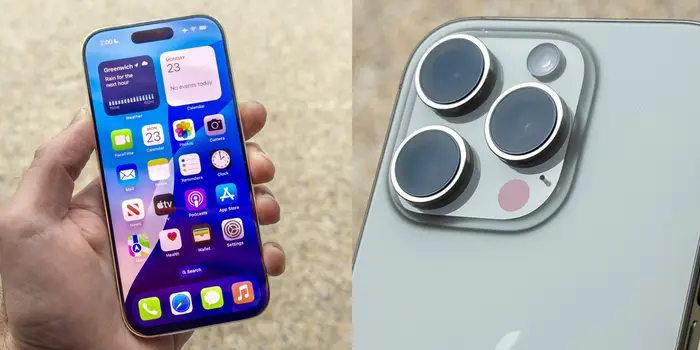We all have witnessed how the advent of the iPhone and the consequent emergence of numerous filters and camera apps—factored with the birth of Instagram, ushered in a new age of digital photography. Thanks to iPhones and a reliable internet connection, great photos are now easier to take and even easier to share.
Indeed, the iPhone has allowed photography enthusiasts to create stunning shots minus the technical knowledge and hassle that professional photographers must painstakingly master with DSLR cameras. However, no matter how easy the iPhone has made it, creating great photographs still entails more than just clicking that shutter button. A well-thought-of composition and a few camera tricks can go a long way.
To get that much sought-after double tap, here are six tips to help you maximize your iPhone and up your iPhone photography game:
1. Use the rear-facing camera.
The rear camera, the one on the back of your iPhone, takes considerably higher resolution photos compared with a front-facing camera or the one you use for selfies. So, whenever you can, use the rear-facing camera for a higher quality shot.

2. Maximize your headphones.
This may sound like it doesn’t belong on an article on photography, but hear this out. The earphones that came with your iPhone can double as a remote for taking photos.
You, you read that right. Just plug your earphones into your phone, open the camera app, and press the “up” volume button to take pictures. You can even use a tripod if you want to take a decent self-portrait where your face doesn’t eat up the whole frame.

3. Don’t zoom in.
The camera’s zoom tool can be handy when you’re far away from your subject. However, the zoom tool reduces the resolution of the photo.
Hence, if you want a close-up shot, move closer to your subject as much as you can instead of zooming in. You can also take a photo at an average distance and crop it afterward.

Just make sure to keep your hands steady so that your shot is still tack-sharp even when you’ve cropped it.
4. Keep it lit.
The fundamentals of photography remain the same, may it be an iPhone or a DSLR camera—the light is your best friend. Photos taken under low-light conditions often result in grainy, and therefore, poor-quality photos.
While taking pictures in poorly-lit places is inevitable, it is handy to know that you can adjust your iPhone camera’s brightness setting, just as how one can adjust the exposure in a DSLR camera.

Simply tap on the screen to adjust the lighting of your photo! If you’ve taken the shot and you’re still not satisfied with the outcome, it is wiser to adjust your photo’s brightness and saturation first before you start having fun with filters.
5. Keep it steady.
Again, photography fundamentals don’t change no matter what camera you’re using. A tack-sharp photograph is still worth more than a thousand shaky photos.
To keep your hands steady and to avoid blurry photos, use both hands. Hold your phone with two hands and use your right hand to click the shutter as you would with a regular camera.

Remember that your phone doesn’t snap a photo until you take your finger off the shutter. You can also shoot in burst. Burst is especially useful when you’re trying to shoot a moving subject. You can do this by holding down the camera’s shutter to take multiple shots in rapid succession. This way you’re sure to get at least one sharp photo that captured the subject/s frozen in action.
6. A composition is key.
As mentioned, Apple may have made taking awesome photographs easier. Anyone with an iPhone can create beautiful images without lugging around a bulky DSLR and learn the technicalities of shutter speed, aperture, ISO, and white balance to name a few.
Having said that, a pretty picture doesn’t come out on its own. Good composition still catches the eyes and gets one to double-tap your photo.
Here are a few bonus composition tips to keep in mind:
• Symmetry and Pattern
It is gospel that symmetry and pattern have strong visual impact. Hence, look out for symmetrical scenes or arrange your subject/s symmetrically or in a certain pattern. A good example of symmetry and pattern at work are flat-lays.
Although depth is compromised, flat-lays work because there are visual balance and an easily recognizable pattern.

• Framing
Framing creates a sense of depth. The mouth of a cave, a window, and even an out-of-focus foreground of foliage can be used to frame your subject.Use your surroundings and be creative.

• Leading lines and the S-Curves
Inject depth and dynamism to your photo by incorporating leading lines and S-curves.A leading line is any line that directs the attention of the viewer to the photograph. Leading lines can be anything from a grove of trees, towering buildings, or a railroad track.

S-curves are lines that follow the shape of the letter “S.” S-curves may be found in the bend of a river, a winding road, or waves kissing the coastline.

• Negative Space
Negative space is the empty space in a photo. Traditionally, it is deemed as a waste of frame. In this era of Instagram, however, negative spaces can be a frame. It spells chic and minimalist. It’s also a neat way of making your subject stand out.

• Experiment with Angles
Inject some dynamism in your feed and take photos from a different perspective. The more unusual, the more double-taps.

The charm of the iPhone lies not only in its ability to capture images in a resolution considerably higher than your regular phone camera but more importantly, its portability. As the adage goes,“The best camera to have is the one that’s with you all the time.”
Remember these tips to maximize your iPhone and to capture Ralph Wunsch-like photos.
Valerie Chua is a seasoned writer for GoGlobe. She lives in a small bayside community. Globe PH is a leading internet broadband provider in the Philippines.






